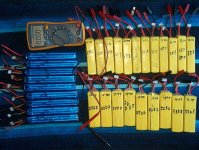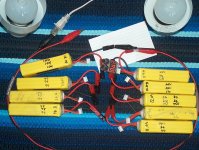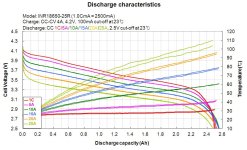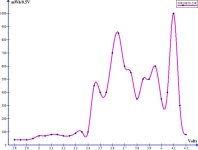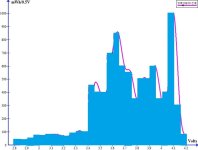DrkAngel
1 GW
This thread caters to the hard core do-it-yourselfers.
Designed to explore simplified super budget battery building.
Of course most BUILDS are time and/or labor intensive.
But I have built 25.9V 24Ah (actual capacity) packs for $40 and 33.3V 30Ah (1kWh actual capacity) pack for $90.
Over the years I've streamlined methods to reduce build time and improve durability but unless you need to save money ...
You might want to purchase new cells, build yourself, add a compatible BMS and find a charger ... in which case I would recommend purchasing a pre-made pack with matched components.
Plenty of good tips and ideas here though.
Check the index in #1 post of this thread.
Note: even new cells should be tested for:
self-discharge;
IR (Internal Resistance);
and
actual capacity.
Any variance in any of these factors will require the continuous use of a BMS or thorough testing and precise sorting.
Good brand name cells from retailers of impeccable reputation might be considered "pre-tested".
I have seen such encouraging claims as "all cells shipped in batch will be IR matched"."
Self- discharging cells are the bane of any battery build and must be tested for and eliminated ... IMO.
The alternative is a good BMS that constantly bleeds down all the "good" banks that aren't infected with self-discharging cells ... idiotic IMO!!!.
Designed to explore simplified super budget battery building.
Of course most BUILDS are time and/or labor intensive.
But I have built 25.9V 24Ah (actual capacity) packs for $40 and 33.3V 30Ah (1kWh actual capacity) pack for $90.
Over the years I've streamlined methods to reduce build time and improve durability but unless you need to save money ...
You might want to purchase new cells, build yourself, add a compatible BMS and find a charger ... in which case I would recommend purchasing a pre-made pack with matched components.
Plenty of good tips and ideas here though.
Check the index in #1 post of this thread.
Note: even new cells should be tested for:
self-discharge;
IR (Internal Resistance);
and
actual capacity.
Any variance in any of these factors will require the continuous use of a BMS or thorough testing and precise sorting.
Good brand name cells from retailers of impeccable reputation might be considered "pre-tested".
I have seen such encouraging claims as "all cells shipped in batch will be IR matched"."
Self- discharging cells are the bane of any battery build and must be tested for and eliminated ... IMO.
The alternative is a good BMS that constantly bleeds down all the "good" banks that aren't infected with self-discharging cells ... idiotic IMO!!!.


